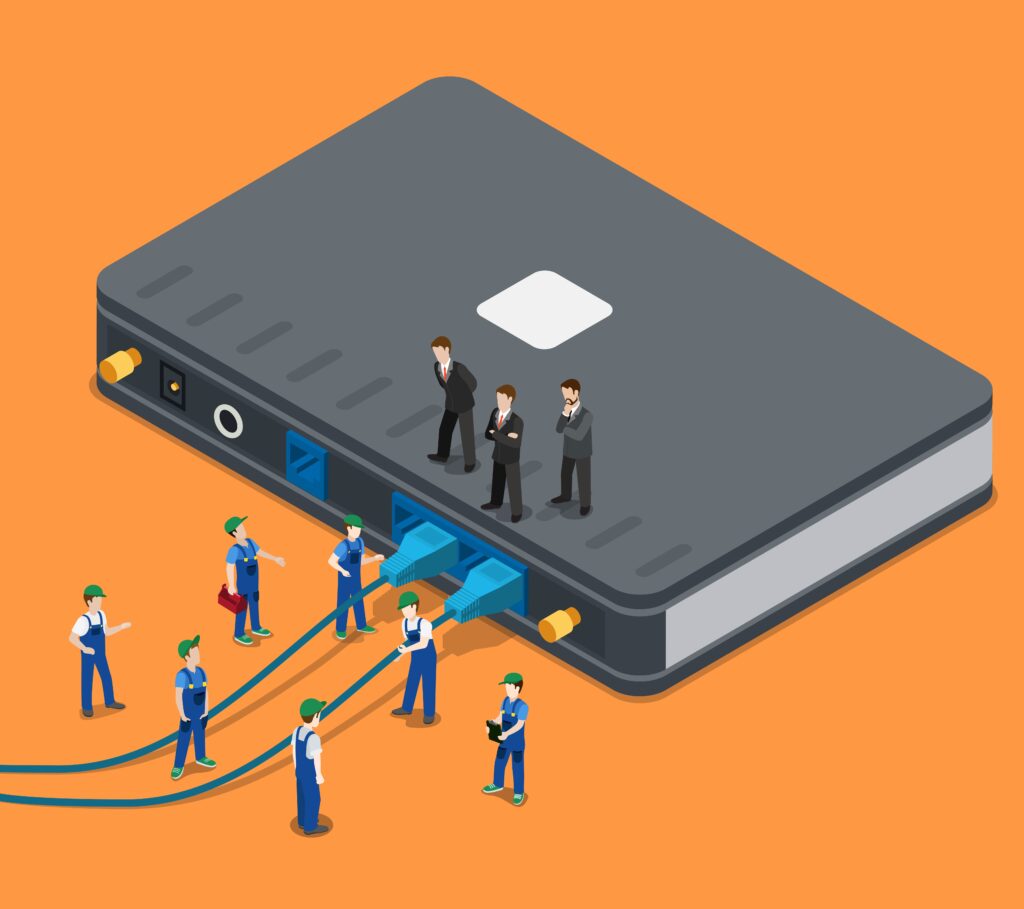Apr 16 2024
/

Difference Between PoE Switches and Normal Switches
In network infrastructure, minor differences in networking components can majorly impact your bottom line. Connectivity is crucial for modern businesses, and choosing the right gear is essential. Deciding between Power over Ethernet (PoE) switches and conventional switches is particularly important.
This guide outlines the differences between PoE and non-PoE switches, helping you make choices to improve your network’s performance and efficiency.
PoE Switches vs Regular Switches
What is a PoE Switch?
A Power over Ethernet (PoE) switch supplies power to devices over the same Ethernet cable used for data transmission. It simplifies setup by eliminating the need for extra power supplies, making it ideal for complex workplace setups.
What is a Normal Switch?
A normal switch, also known as a standard or unmanaged switch, connects Ethernet devices within a LAN. Unlike PoE switches, it does not provide power through Ethernet cables.
When to Choose a PoE Switch Over a Normal Switch
Understanding the details of working environments is important when choosing switches.
Benefits of PoE Switches
- Minimizes cabling and reduces mess.
- Invaluable in areas with limited access to power.
- Critical for powering devices in isolated locations.
- Commonly utilized for camera surveillance, wireless access points, and VoIP phones.
Advantages of Normal Switches
- Perfect for environments where power isn’t a concern.
- Offers a more straightforward and cost-efficient solution.
- Important to assess the power requirements of network devices.
- Assessing the need for a direct power supply is crucial.
- It’s strategic to incorporate both PoE and traditional switches in the network design to optimize functionality.
Network Design Considerations With PoE Switches
Network design goes beyond connecting devices; it aims to create scalable and resilient systems.
For Large-Scale Installations
In large network designs using PoE switches, important considerations include switch capacity, cable lengths, and redundancy. Considering power management and the need for power-sourcing equipment (PSE) to support your PoE switches is crucial.
For Smaller, Agile Environments
PoE switches in smaller spaces offer flexibility for growth. They simplify device setup and movement, easing changes and adaptations in limited spaces.
The Cost of Running Your Network
Setting up a PoE switch can be a significant initial investment compared to traditional switches. Yet, the cost is offset by fewer cabling needs, lower installation costs, and compatibility with efficient power-over-ethernet devices. Business owners should weigh the long-term financial gains against the upfront costs to make a decision that fits their budget and goals.
Future-Proofing Your Network With PoE
The tech landscape is always changing, with more devices supporting PoE. Adding PoE switches to your network is a smart move to prepare for new PoE innovations. This approach future-proofs your network, protecting your investment, and may save time and resources later.
Uses of PoE and Standard Switches
To highlight the advantages of PoE switches over traditional ones, examining specific uses and sectors is helpful.
Surveillance Systems
PoE switches make installing video surveillance easier by combining power and data for each camera. This reduces costs and installation time and offers more camera placement flexibility.
Office Environments
While traditional switches work for desktops and printers in offices, PoE switches are key as businesses add more wireless APs, digital signs, and IoT devices, offering a cleaner, more efficient, and more scalable network.
Healthcare and Education
In dense areas like hospitals and schools, PoE switches offer the power and flexibility needed. They allow for fast deployment of new access points or devices, eliminating the mess of power cords and supporting essential operations.
The Environmental Impact
- The ecological footprint of network devices is often overlooked.
- PoE technology improves power efficiency, reducing carbon emissions.
- Consolidation of power delivery through PoE switches minimizes energy waste.
- Supports eco-friendly initiatives, aligning with green IT trends and corporate social responsibility.
Choosing the Best Switch for Your Business
Deciding between a PoE switch and a standard switch depends on various factors, including your power needs, your setup’s layout, and your budget. Business owners should carefully consider these aspects and seek advice from networking experts when needed to ensure their choice supports their operational requirements, growth plans, and financial limits.
By understanding the differences, advantages, and uses of PoE switches compared to standard switches, you’re building a solid base for your business’s networking core. Whether it’s powering security systems, offering flexible connectivity in the office, or meeting your industry’s specific needs, the right switch plays a crucial role in your business operations.
Frequently Asked Questions
What is a PoE switch?
A Power over Ethernet (PoE) switch is a network switch that sends power and data through a single Ethernet cable to devices like security cameras, wireless access points, and VoIP phones.
Why use a PoE switch in my business?
PoE switches streamline wiring, cut installation costs, allow remote power management, and support devices in areas without power outlets, making them ideal for flexible and efficient power deployments.
Can a PoE switch power any device?
Only PoE-compatible devices or those with a PoE splitter can be powered by a PoE switch. Always check device compatibility and power needs.
How do I choose the right PoE switch for my business?
Look at the number of devices, their total power needs, desired network speeds, and future growth. Consulting a networking expert can help tailor the choice to your needs.
Are there disadvantages to PoE switches?
PoE switches usually have higher initial costs than non-PoE ones and a limited power output, which may limit the number of high-power devices connected.
Is installing and managing PoE switches difficult?
With modern network management tools, installing and managing PoE switches is straightforward, but proper planning is essential for supporting your power and data needs both now and in the future.
